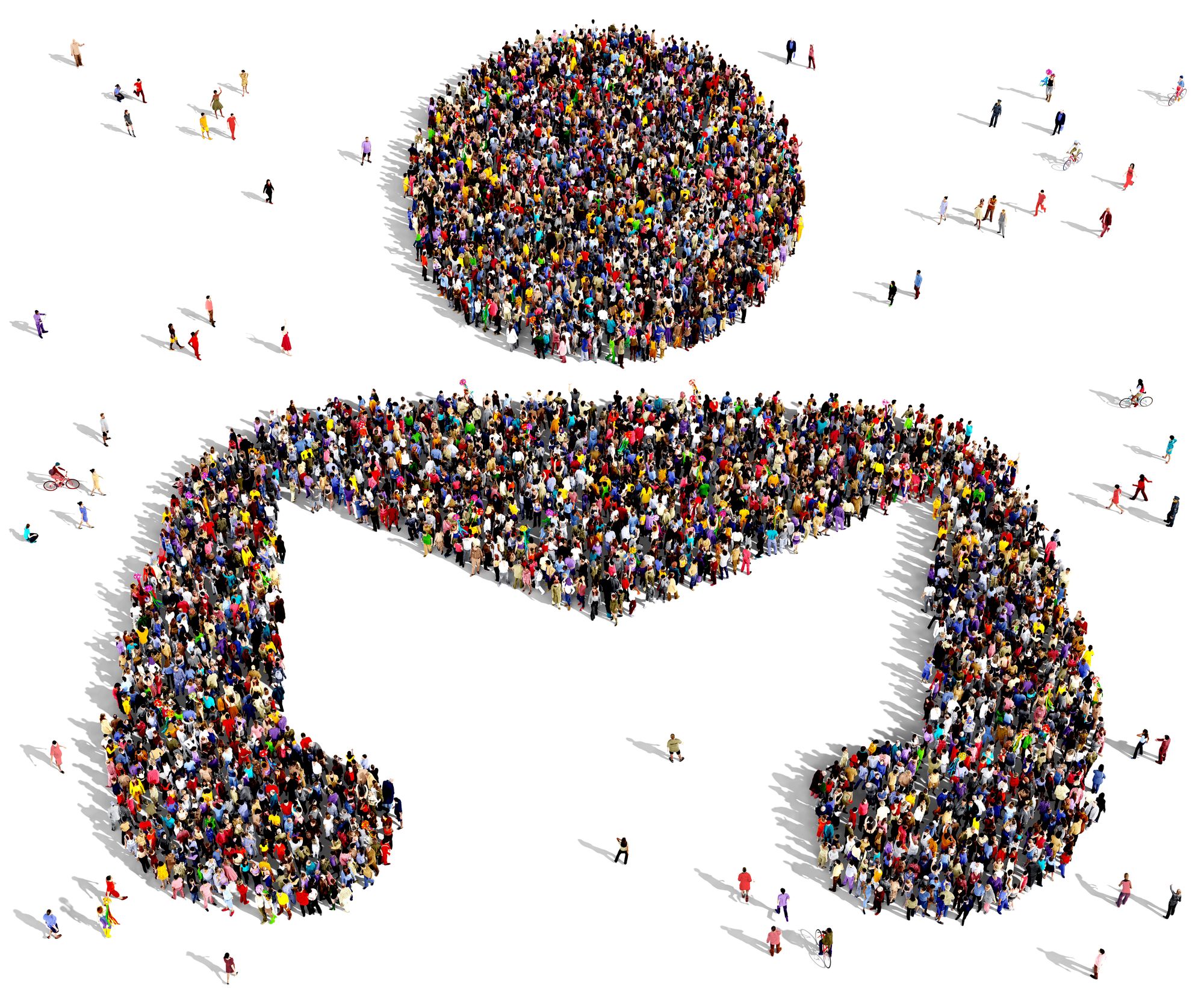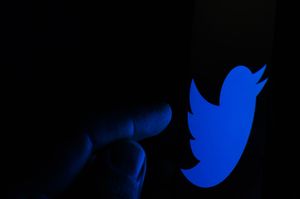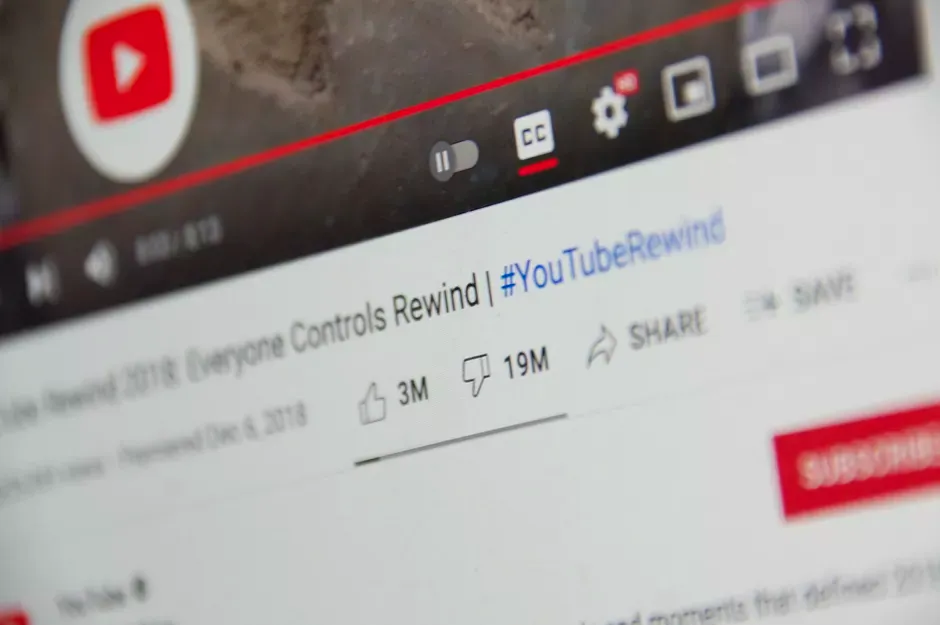Have you ever:
- Watched a video on YouTube because it had a high count of likes?
- Skipped on a video because its count of dislikes was greater than its likes?
The ratio of like to dislike counts associated with a post has a direct impact on how you:
- Judge the value of the content within posts.
- Determine whether a clip is worth viewing or not.

Recently, YouTube decided to hide the public count of dislikes from posts across its site, stating that this change intends to protect smaller creators from targeted harassment and promote respectful interactions between viewers and creators. This removal created quite a bit of a stir in its community.
This move was not unexpected, with YouTube publicly announcing:
- It was experimenting with hiding the public dislike numbers.
- The ability for content creators to hide ratings on their videos.

Why does this matter to you?
YouTube is the second most prominent social media platform and content sharing platform globally, with 79% of internet users saying they have a youtube account (Datareportal, 2019).

It is also recognised as the second most popular search engine after Google. (YouTube, 2021) with 62% of businesses using YouTube as a channel to post video content about their products and services (Buffer, 2019) and improve their brands' visibility.

Youtube viewers watch over 1 billion hours of video every day (YouTube, 2021) to access the content of interest for personal advancement, business discovery and more!

When I refer to content, I include any video, text, comment, or other format shared on a social medium like email, newspaper, blog, and social site like LinkedIn, YouTube, Facebook, Twitter, TikTok, Instagram etc.

- As a consumer of content, you can inform your decision on whether to consume (watch/read) the content of a post out of interest in what made it so popularly liked/disliked.
- As a creator of content, you can judge the value of work based on the counts and ratio between likes and dislikes attributed to that video by a global crowd. This applies to assessing the value of your content and that of others.
Typical Like/Dislike ratios for Youtube
Most videos have a like-to-dislike ratio ranging between 30:1 and 100:1 at maximum

To achieve organic dislikes beyond this ratio, you generally need to sport some terrifying, shocking, or disturbing content, such as nudity, drugs, gory violence, twerking, etc., that may upset many viewers, creating a high concentration of dislikes.
Examples of content that organically tend to get a higher concentration of dislikes to include:
- Faulty or highly-biased reasoning.
- Controversial or highly disagreeable opinions (e.g. extreme political, or social views).
- An insincere apology.
- Informative-looking content that ends up being an ad.
Unpacking why people LIKE content:

Reasons people like content such as posts, articles, videos etc.:
- They enjoyed or took value from the content (learned something new, got entertained, aligned interests or point-of-view etc.).
- They were referenced, included or mentioned.
- They are being paid to like a post.
- They have a hidden agenda where liking this particular post reduces the chances of a competitive post being more popular.
Unpacking why people DISLIKE content:

There is always a reason for people liking or disliking videos:
- They honestly did not like a post and thought it was terrible or misleading.
- The quality of the sound, articulation, video etc., was very bad.
- They felt the content was not aligned with the post's title (misleading a.k.a clickbait).
- They are being paid to dislike a post.
- They have a hidden agenda where disliking this post increases the chances of an alternative competitive post being more popular.
- They hope to outrank content from similar channels that post about similar subject matters (E.g. gaming, entertainment, movie reviews etc.).
- They want to make content from the creator less likely to show up in search results.
- They want to make the creator of this content look bad (a.k.a. Trolling).
- It is an actual bot disliking the content.
Scientific considerations

When someone likes your post
When someone puts a LIKE for your post, your body releases the dopamine hormone in your head. This hormone is directly responsible for making you feel you've achieved something in your life.
When someone dislikes your post
On the other hand, when someone puts a DISLIKE against your post, your body releases the cortisol hormone in your head. Cortisol is directly responsible for making you worry about yourself, your talents, etc.
When Trolling strikes

While the first time it strikes your content or only profile, it is shocking and terrifying. While experienced content creators are more used to handling this practice, the brutality towards some new entrants can be pretty impacting:
- "In one case, I recently had someone thumb down 20 videos in a minute flat."
- "They "Hate" the video. But how can you hate a video you never watched, to begin with?"
- "I know from experience that 99% of my channel own dislikes came from trolls."
- "I get comments about the reason. Most of the time, they are not related to the video content in any way".

"Trolling can cause significant harm and distress. It is associated with serious physical and psychological effects, including disrupted sleep, lowered self-esteem, depression, self-harm, suicidal ideation, and in some cases, even suicide.", The Conversation
The wisdom of crowds

The usage of Likes and dislikes have a very important purpose in providing you with meaningful information and content you may like. The ratio between likes and dislikes is used to prioritise posts in a flood of content, where great creations can be quickly surfaced and exposed before others. For that to happen, the less significant posts would need to be de-prioritised as fast as possible.
The way people and search engines interpret these values make them of great interest to focus on for one's gain.
Wrapping up

In this post, we laid out the stage and pieces of the gameboard to understand the arguments in favour/against the removal of the public dislikes count.
In "YouTube's painful removal of dislike counts to fight off TikTok; an analysis (P2)", we explore the user and creator arguments debating the merit of the final decision by YouTube. In "YouTube's painful removal of dislike counts to fight off TikTok; an analysis (P3)" we explore the business considerations as lived from the YouTube point of view.
Let me know your thoughts by reaching out!







